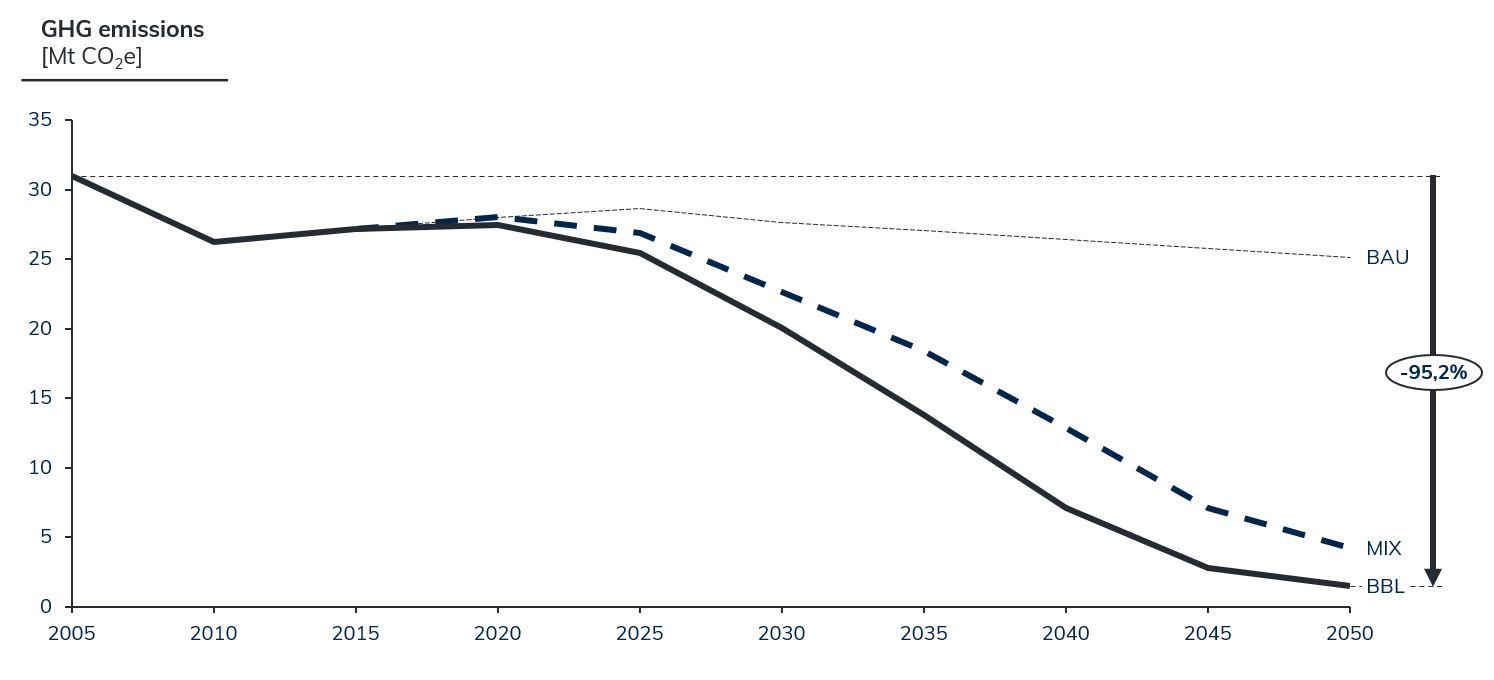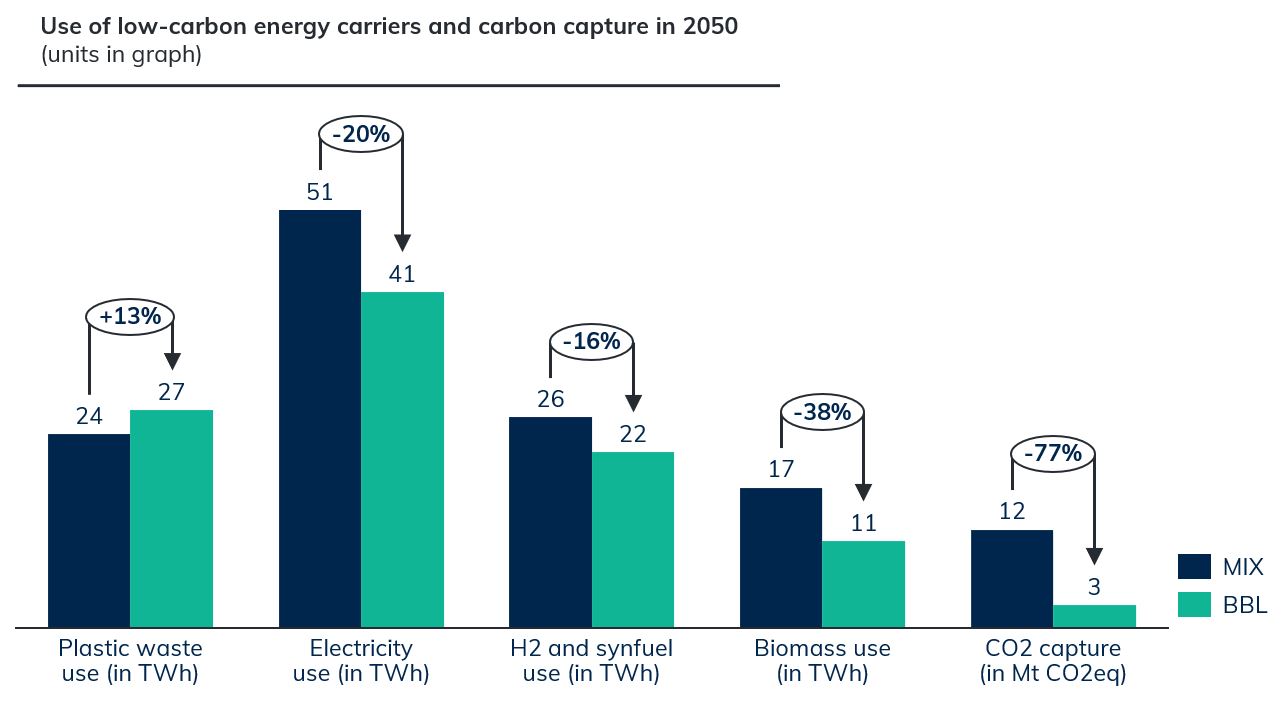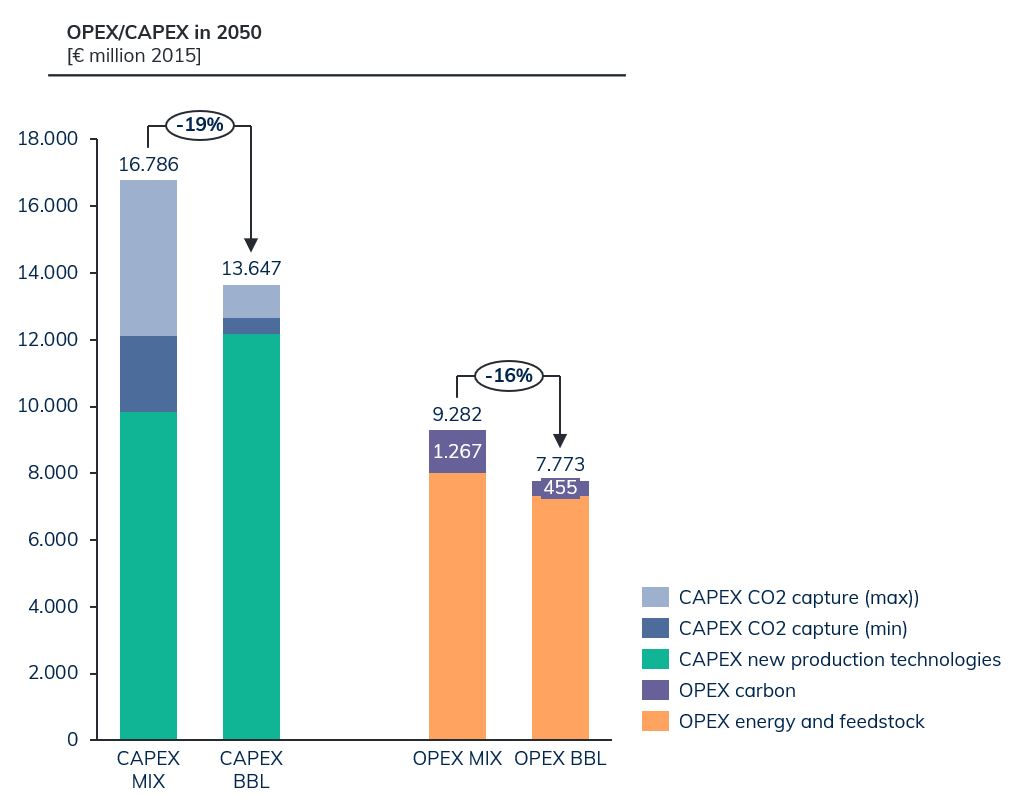
Context
The Flemish industry is the largest emitting sector in Flanders, accounting for > 30% of total GHG emissions. At the same time, it is an important contributor to the Flemish economy, and produces many of the products that will be needed for the transition in other sectors, such as building materials, and materials for renewable energy production capacity. Decarbonizing the Flemish industry is thus a key element of the transition towards a net-zero emission society.
In 2020, a consortium of Deloitte, Climact, the VUB and AMS did a study for the Flemish Agency for Innovation and Entrepreneurship (VLAIO) to assess how the Flemish industry could achieve deep GHG reductions by 2050. This study built on a number of reduction scenarios which were modelled by a simulation tool developed by Climact.
Now, one year later, we have extended the analysis with an additional scenario that was developed with and for Bond Beter Leefmilieu, using the same modeling tool as for the 2020 VLAIO study. In this new scenario, it is assessed how even deeper reductions could be achieved if more emphasis is put on a circular economy, which would lead to lower material demand and thus lower production volumes.
Approach
For this exercise, we started from the central MIX scenario from the 2020 VLAIO study. From there on, a number of the underlying assumptions of this scenario were changed. In short, these changes relate to four principles:
– Lower material production due to higher emphasis on circular economy measures
– An even-higher use of electrification and circular technologies
– A lower use of CO2 capture and biomass-based technologies
– A complete phase-out of Flemish refineries by 2040, due to the large-scale electrification of the transport and buildings sectors.
Results: more emphasis on a circular economy would lead to 95% emission reductions in the Flemish industry, while reducing reliance on scarce resources and CO2 capture, and at lower costs.
Under the 2020 MIX scenario, emissions would already reduce by 86% by 2050 compared to 2005. Under our new scenario, emissions are reduced even further and faster, ending -95% below 2005 levels by 2050. Futher reductions are achieved in every industrial sector.

Moreover, these reductions would be achieved while reducing the total need for low-carbon energy carriers, and with a significantly lower reliance on CO2 capture technology compared to the MIX scenario. Under the MIX scenario, by 2050 up to 12 million tonnes of CO2 would have to be captured each year. Under this new scenario, the reliance of reductions on CO2 capture is reduced to 3 million tonnes of CO2 per year.

In terms of costs, this scenario would require higher investments in low-carbon production technologies compared to the 2020 MIX scenario, but this would be more than compensated by lower required investments in CO2 capture technology. Furthermore, although operational costs for energy and feedstocks are expected to be only slightly lower compared to the 2020 MIX scenario, overall OPEX are expected to be 16% lower in 2050 due to higher avoided carbon costs.

Conclusions
By leveraging the full potential of a circular economy, deeper reductions can be achieved in the Flemish industry while reducing the dependence on low-carbon energy carriers and feedstocks and CO2 capture technology, and at lower overall costs. To compensate loss of revenue from lower production volumes, Flemish industry is encouraged to develop new business models (e.g. goods-as-a-service) to increase their added value even if their gross production volumes decrease.
Want to know more?
The full study of Bond Beter Leefmilieu is available here.
The study was presented on 4 October 2021, followed by a panel debate with representatives from industry, the Flemish administration, labour associations and the NGO community. The recordings can be rewatched at the link above.
Author: Pieter-Willem Lemmens
Source of all graphs: CLIMACT.